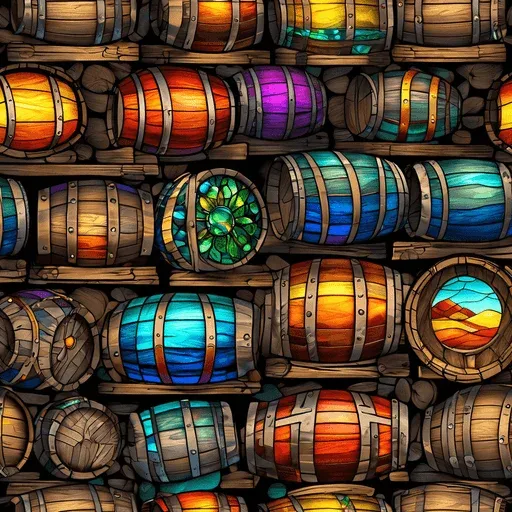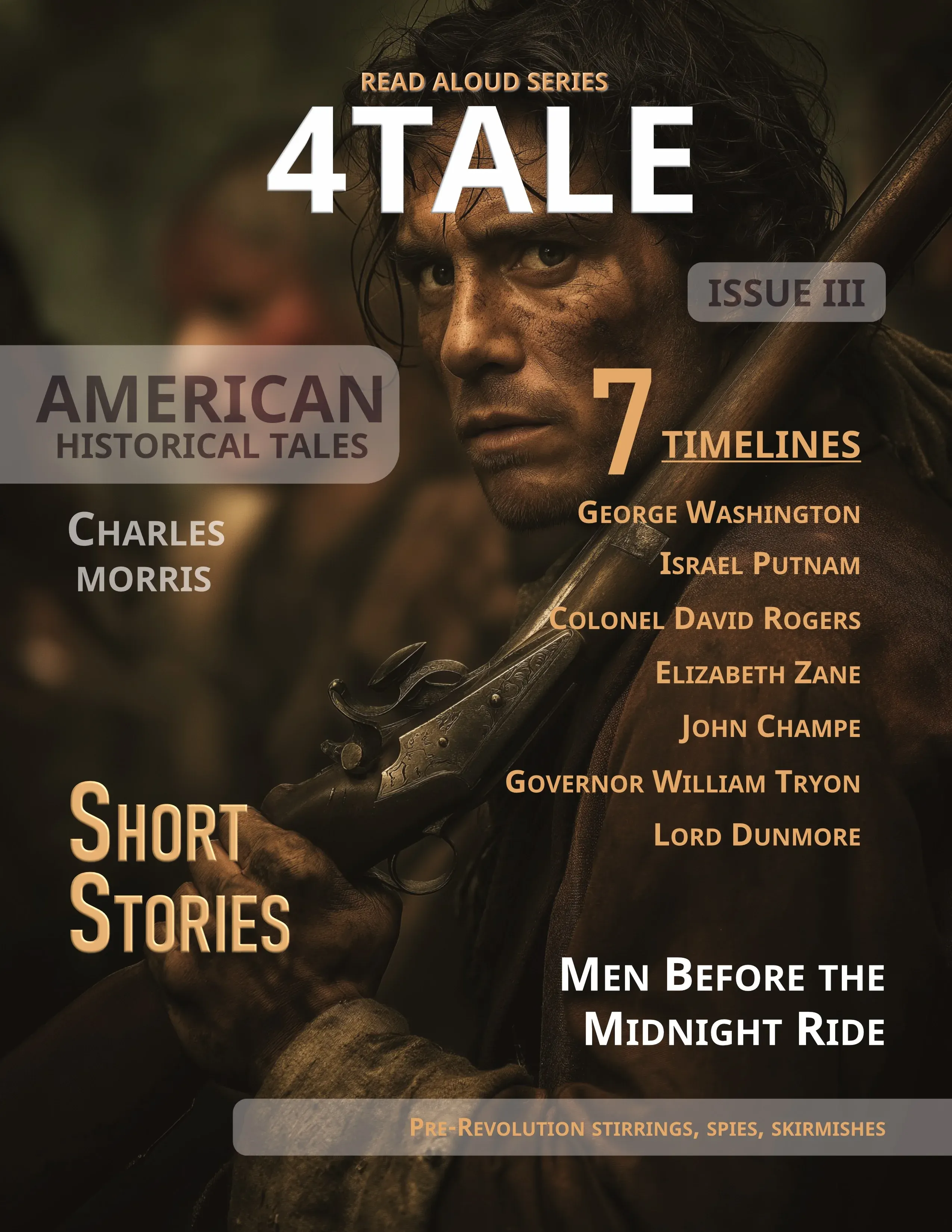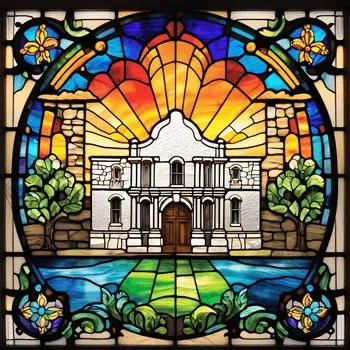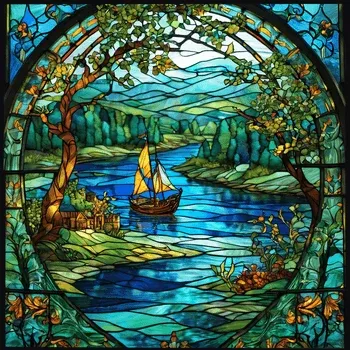In the city of Williamsburg, the old capital of Virginia, there still stands a curious old powder magazine, built nearly two centuries ago by Governor Spotswood, the hero of the "Golden Horseshoe" adventure. It is a strong stone building, with eight-sided walls and roof, which looks as if it might stand for centuries to come. On this old magazine hinges a Revolutionary tale, which seems to us well worth the telling. The story begins on April 19, 1775, the day that the shots at Lexington brought on the war for independence.
The British government did not like the look of things in America. The clouds in the air, and the occasional lightning flash and thunder roar, were full of threat of a coming storm. To prevent this, orders were sent from England to the royal governors to seize all the powder and arms in the colonies on a fixed day, This is what Governor Gage, of Massachusetts, tried to do at Concord on April 19th. In the night of the same day, Lord Dunmore, governor of Virginia, attempted the same thing at Williamsburg.
Had this been done openly in Virginia, as in Massachusetts, the story of Lexington would have been repeated there. Lord Dunmore took the patriots by surprise. A British ship-of-war, the "Magdalen," some time before, came sailing up York River, and dropped its anchor in the stream not far from Williamsburg. On the 19th of April Lord Dunmore sent word to Captain Collins, of the "Magdalen," that all was ready, and after dark on that day a party of soldiers, led by the captain, landed from the ship. About midnight they marched silently into the town. All was quiet, the people in their beds, sleeping the sleep of the just, and not dreaming that treachery was at their doors. The captain had the key to the magazine and opened its door, setting his soldiers to carry out as quietly as possible the half-barrels of gunpowder with which it was stored. They came like ghosts, and so departed. All was done so stealthily, that the morning of the 20th dawned before the citizens knew that anything had been going on in their streets under the midnight shadows.
When the news spread abroad the town was in an uproar. What right had the governor to meddle with anything bought with the hard cash of Virginia and belonging to the colony? In their anger they resolved to seize the governor and make him answer to the people for his act. They did not like Lord Dunmore, whom they knew to be a false-hearted man, and would have liked to make him pay for some former deeds of treachery. But the cooler heads advised them not to act in haste, saying that it was wiser to take peaceful measures, and to send and tell Dunmore that their powder must be returned.
This was done. The governor answered with a falsehood. He said that he had heard of some danger of an insurrection among the slaves in a neighboring county, and had taken the powder to use against them. If nothing happened, he would soon return it; they need not worry, all would be right.
This false story quieted the people of Williamsburg for a time. But it did not satisfy the people of Virginia. As the news spread through the colony the excitement grew intense. What right had Lord Dunmore to carry off the people's powder, bought for their defence? Many of them seized their arms, and at Fredericksburg seven hundred men assembled and sent word that they were ready to march on Williamsburg. Among them were the "minute men" of Culpeper, a famous band of frontiersmen, wearing green hunting-shirts and carrying knives and tomahawks. "Liberty or Death," Patrick Henry's stirring words, were on their breasts, and over their heads floated a significant banner. On it was a coiled rattlesnake, with the warning motto, "Don't tread on me!"
Prompt as these men were, there was one man in Virginia still more prompt, a man not to be trifled with by any lordly governor. This was Patrick Henry, the patriotic orator. The instant he heard of the stealing of the powder he sent word to the people in his vicinity to meet him at Newcastle, ready to fight for Virginia's rights. They came, one hundred and fifty of them, all well armed, and without hesitation he led them against the treacherous governor. It looked as if there was to be a battle in Virginia, as there had been in Massachusetts. Lord Dunmore was scared when he heard that the patriots were marching on him, as they had marched on Lord Berkeley a century before. He sent word hastily to Patrick Henry to stop his march and that he would pay for the powder.
Very likely this disappointed the indignant orator. Just then he would rather have fought Dunmore than take his money. But he had no good excuse for refusing it, so the cash was paid over, three hundred and thirty pounds sterling,—equal to about sixteen hundred dollars,—and Henry and his men marched home.
Lord Dunmore was in a towering rage at his defeat. He did what Berkeley had done against Bacon long before, issuing a proclamation in which he said that Patrick Henry and all those with him were traitors to the king. Then he sent to the "Magdalen" for soldiers, and had arms laid on the floors of his lordly mansion ready for use when the troops should come.
All was ripe for an outbreak. The people of Virginia had not been used to see British troops on their soil. If Lord Dunmore wanted war they were quite ready to let him have it. Arms were lacking, and some young men broke open the door of the magazine to see if any were there. As they did so there was a loud report and one of the party fell back bleeding. A spring-gun had been placed behind the door, doubtless by Lord Dunmore's orders.
The startling sound brought out the people. When they learned what had been done, they ran angrily to the magazine and seized all the arms they could find there. In doing so they made a discovery that doubled their indignation. Beneath the floor several barrels of gunpowder were hidden, as if to blow up any one who entered. While they were saying that this was another treacherous trick of the governor's, word was brought them that the troops from the "Magdalen" were marching on the town. With shouts of fury they ran for their arms. If Lord Dunmore was so eager for a fight, they were quite ready to accommodate him and to stand up before his British soldiers and strike for American rights. A few words will end this part of our story. When the governor saw the spirit of the people he did as Berkeley before him had done, fled to his ships and relieved Williamsburg of his presence. The Virginians had got rid of their governor and his British troops without a fight.
This ends the story of the gunpowder, but there were things that followed worth the telling. Virginia was not done with Lord Dunmore. Sailing in the "Magdalen" to Chesapeake Bay, he found there some other war-vessels, and proceeded with this squadron to Norfolk, of which he took possession. Most of the people of that town were true patriots, though by promises of plunder he induced some of the lower class of whites to join him, and also brought in many negro slaves from the country around. With this motley crew he committed many acts of violence, rousing all Virginia to resistance. A "Committee of Safety" was appointed and hundreds of men eagerly enlisted and were sent to invest Norfolk. But their enemy was not easy to find, as they kept out of reach most of the time on his ships.
On December 9, 1775, the first battle of the Revolution in the South took place. The patriot forces at that time were at a place called Great Bridge, near the Dismal Swamp, and not far from Norfolk. Against them Dunmore sent a body of his troops. These reached Great Bridge to find it a small wooden bridge over a stream, and to see the Americans awaiting them behind a breastwork which they had thrown up across the road at the opposite end of the bridge. Among them were the Culpeper "minute men," of whom we have spoken, with their rattlesnake standard, and one of the lieutenants in their company was a man who was to become famous in after years,—John Marshall, the celebrated Chief Justice of the United States.
The British posted their cannon and opened fire on the Virginians; then, when they fancied they had taken the spirit out of the backwoods militia, a force of grenadiers charged across the bridge, led by Captain Fordyce. He proved himself a good soldier, but he found the colonials good soldiers too. They held back their fire till the grenadiers were across the bridge and less than fifty yards away. Then the crack of rifles was heard and a line of fire flashed out all along the low breastwork. And it came from huntsmen who knew how to bring down their game.
Many of the grenadiers fell before this scorching fire. Their line was broken and thrown into confusion. Captain Fordyce at their head waved his hat, shouting, "The day is ours!" The words were barely spoken when he fell. In an instant he was on his feet again, brushing his knee as if he had only stumbled. Yet the brave fellow was mortally wounded, no less than fourteen bullets having passed through his body, and after a staggering step or two he fell dead.
This took the courage out of the grenadiers. They fell back in disorder upon the bridge, hastened by the bullets of the patriots. At every step some of them fell. The Virginians, their standard-bearer at their head, leaped with cheers of triumph over the breastwork and pursued them, driving them back in panic flight, and keeping up the pursuit till the fugitives were safe in Norfolk. Thus ended in victory the first battle for American liberty on the soil of the South.
Lord Dunmore had confidently expected his bold grenadiers to return with trophies of their victory over the untrained colonials. The news of their complete defeat filled him with fear and fury.At first he refused to believe it, and threatened to hang the boy who brought him the news. But the sight of the blood-stained fugitives soon convinced him, and in a sudden panic he took refuge with all his forces in his ships. The triumphant Virginians at once took possession of the town.
Dunmore lingered in the harbor with his fleet, and the victors opened fire with their cannon on the ships. "Stop your fire or I will burn your town with hot shot," he sent word. "Do your worst," retorted the bold Virginia commander, and bade his men to keep their cannons going. The ruthless governor kept his word, bombarding the town with red-hot shot, and soon it was in flames.
The fire could not be extinguished. For three days it raged, spreading in all directions, till the whole town was a sheet of flames. Not until there was nothing left to burn did the flames subside. Norfolk was a complete ruin. Its six thousand inhabitants, men, women, and children, were forced to flee from their burning homes and seek what scant refuge they could find in that chill winter season. Dunmore even landed his troops to fire on the place. Then, having visited the peaceful inhabitants with the direst horrors of war, he sailed in triumph away, glorying in his revenge.
The lordly governor now acted the pirate in earnest. He sailed up and down the shores of Chesapeake Bay, landing and plundering the plantations on every side. At a place called Gwyn's Island, on the western shore, he had a fort built, which he garrisoned mainly with the negroes and low whites he had brought from Norfolk. Just what was his purpose in this is not known, for the Virginians gave him no chance to carry it out. General Andrew Lewis, a famous Indian fighter, led a force of patriot volunteers against him, planting his cannon on the shore opposite the island, and opened a hot fire on the fort and the ships.
The first ball fired struck the "Dunmore," the ship which held the governor. A second struck the same ship, and killed one of its crew. A third smashed the governor's crockery, and a splinter wounded him in the leg. This was more than the courage of a Dunmore could stand, and sail was set in all haste, the fleet scattering like a flock of frightened birds. The firing continued all day long. Night came, and no signs of surrender were seen, though the fire was not returned. At daylight the next morning two hundred men were sent in boats to reconnoitre and attack the fort. They quickly learned that there was nothing to attack. Lord Dunmore had been preparing all night for flight. The fort had been dismantled of everything of value, and as the assailants sprang from their boats on the island the ships sailed hurriedly away.
The island itself was a sickening spectacle. The cannonade had made terrible havoc, and men lay dead or wounded all around, while many of the dead had been buried so hastily as to be barely covered. While they were looking at the frightful scene, a strong light appeared in the direction of the governor's flight. Its meaning was evident at a glance. Some of the vessels had grounded in the sands, and, as they could not be got off, he had set them afire to save them from the enemy.
That was almost the last exploit of Lord Dunmore. He kept up his plundering raids a little longer, and once sailed up the Potomac to Mount Vernon, with the fancy that he might find and capture Washington. But soon after that he sailed away with his plunder and about one thousand slaves whom he had taken from the plantations, and Virginia was well rid of her last royal governor. A patriot governor soon followed, Patrick Henry being chosen, and occupying the very mansion at Williamsburg from which Dunmore had proclaimed him a traitor.








